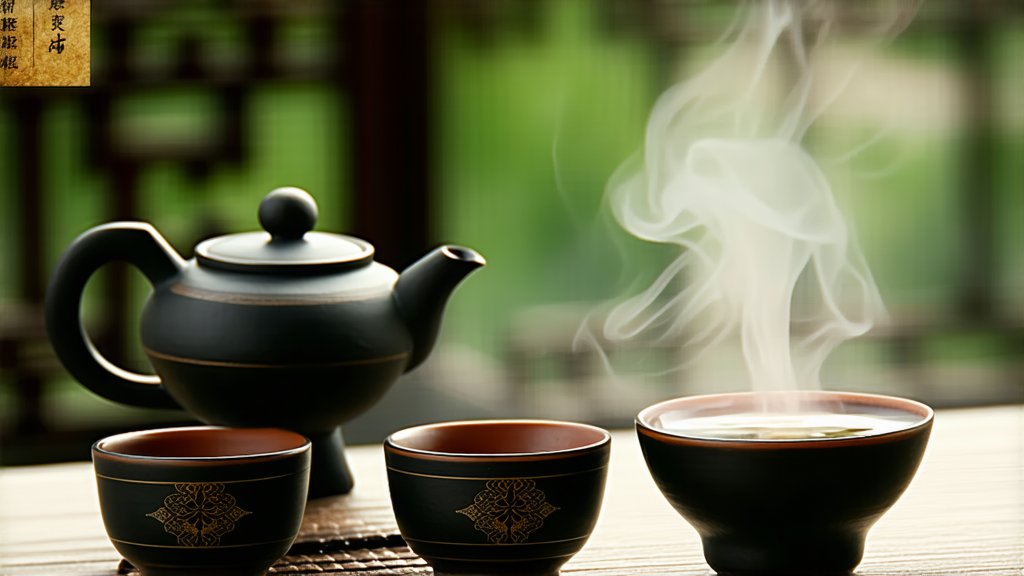
Pu-erh tea, a distinctive variety of dark tea hailing from the ancient Yunnan Province in China, boasts a history that spans over a thousand years. Revered for its complex flavors and numerous health benefits, Pu-erh has carved out a unique niche within the vast landscape of Chinese tea culture. This article delves into the rich heritage, diverse varieties, intricate production processes, and sophisticated art of appreciating Pu-erh tea.
Historical Background
The origins of Pu-erh tea can be traced back to the Tang Dynasty (618-907 AD), although it was during the Ming Dynasty (1368-1644 AD) that Pu-erh began to gain significant popularity. Located in the southwestern region of China, Yunnan Province's unique climate and fertile soil create ideal conditions for the growth of the Camellia sinensis var. assamica plant, which is primarily used for Pu-erh production. Over centuries, Pu-erh tea became a staple along the ancient trade routes, particularly the Tea Horse Road, which connected Yunnan with Tibet and other parts of Asia.
Varieties of Pu-erh Tea
Pu-erh tea is broadly categorized into two main types: raw (Sheng) and ripe (Shou). Each type undergoes a different post-fermentation process, resulting in distinct flavor profiles and aging potentials.
-
Raw (Sheng) Pu-erh: Raw Pu-erh is sun-dried right after it is picked, fixed, and rolled. It is then left to age naturally over time, allowing microbial activity and oxidation to transform its flavors. Sheng Pu-erh is prized for its potential to improve with age, developing more complex and mellow flavors as it matures.
-
Ripe (Shou) Pu-erh: Ripe Pu-erh undergoes a process known as "wet piling" or "wo dui," where the tea leaves are piled together in a humid environment to accelerate fermentation. This process takes several months and results in a tea that is ready to drink upon completion. Shou Pu-erh is known for its earthy, mellow flavors and smooth texture.
Production Process
The journey from leaf to cup for Pu-erh tea involves several meticulous steps:
-
Plucking: High-quality leaves and buds are handpicked, usually from old-growth tea trees which contribute to the tea's depth and complexity.
-
Withering: The freshly picked leaves are spread out to dry under the sun, reducing their moisture content and preparing them for subsequent steps.
-
Fixation: The leaves undergo a brief cooking process to halt enzymatic activity and fix their color.
-
Rolling: The fixed leaves are rolled into tight spiral shapes, enhancing their appearance and facilitating even drying.
-
Fermentation: For Sheng Pu-erh, this involves natural aging processes over many years. For Shou Pu-erh, the leaves are piled and turned regularly to promote controlled fermentation.
-
Drying: After fermentation, the leaves are dried again to reduce moisture levels, ensuring stability and longevity.
-
Aging: For Sheng Pu-erh, aging is a crucial step that develops its unique flavors and aromas. Proper storage conditions, such as controlled humidity and temperature, are essential for optimal aging.
Appreciating Pu-erh Tea
Appreciating Pu-erh tea is an art form that involves all the senses. Here’s how to properly enjoy this exquisite beverage:
-
Preparation: Use a Yixing clay teapot or a Gaiwan, preferably made of unglazed purple clay, to enhance the tea’s flavors. Rinse the teaware with hot water to warm them up.
-
Leaf Quantity: Depending on personal preference and the size of the teapot, use about 5-8 grams of loose leaves or one or two compressed tea cakes (also known as "bingcha").
-
Water Temperature: Use boiling water (100°C) for both Sheng and Shou Pu-erh to fully extract their rich flavors and aromas.
-
Steeping Time: For the first infusion, steep the tea for about 5-10 seconds. Subsequent infusions can be progressively longer, typically increasing by 5-10 seconds per infusion. Pu-erh tea can be infused multiple times, each revealing different layers of flavor.
-
Aroma and Flavor: Savor the evolving aromas and flavors of each infusion. Sheng Pu-erh often starts with astringent, vegetal notes that mellow into sweeter, fruitier tones as it ages. Shou Pu-erh typically offers earthy, woody flavors with a smooth, mellow finish.
-
Appearance: Observe the tea's color and clarity. Sheng Pu-erh usually has a bright, amber hue, while Shou Pu-erh displays a deeper, reddish-brown color.
Health Benefits
Pu-erh tea is not only celebrated for its taste but also for its numerous health benefits. Rich in antioxidants, vitamins, and minerals, it aids in digestion, supports cardiovascular health, and helps in weight management. Regular consumption of Pu-erh tea has been linked to lower cholesterol levels, improved gut health, and enhanced metabolism.
Conclusion
Pu-erh tea stands as a testament to the rich cultural heritage and artisanal skill that defines Chinese tea making. Its intricate production process, coupled with the profound joy of its tasting experience, makes Pu-erh a truly exceptional tea. Whether you are a seasoned tea connoisseur or a curious newcomer, exploring the world of tea, delving into the realm of Pu-erh promises a rewarding and enlightening journey.